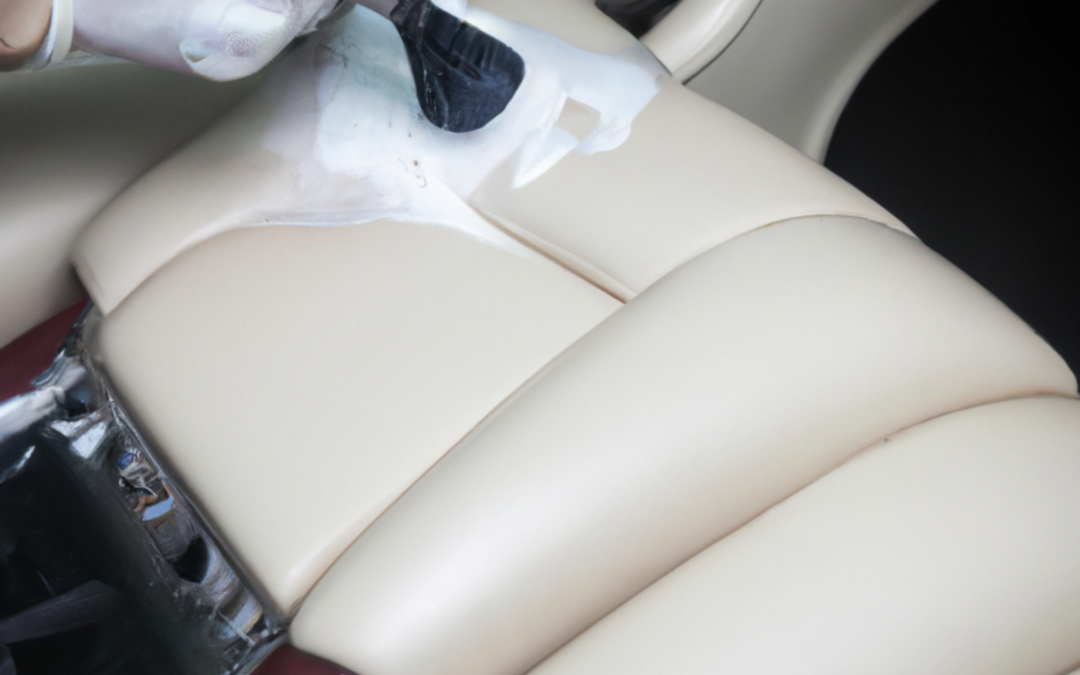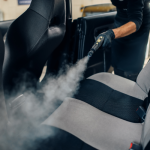Ink stains can significantly mar the aesthetic of leather items. From accidental marks of a ballpoint pen on a beloved leather jacket to ink leaks on flawless leather furniture, these stains pose a real challenge.
This article outlines the most effective strategies for ink stain removal from leather, helping your valued possessions recover their shine. We discuss essential steps for leather ink stain elimination, including immediate action for recent stains and caution to avoid spreading the ink.
Key points before removing ink stains:
- Act quickly to remove new stains.
- Blot excess ink with a dry paper towel without spreading it.
- Conduct a spot test with your chosen cleaner on a hidden area to ensure no damage to the leather’s appearance.
Understanding Different Leather Types:
- Full Grain Leather: Highest quality, durable, made from the outermost animal hide layer, unique with natural marks. More expensive.
- Top Grain Leather: Second highest quality, made from outer hide layer but sanded for uniformity. Less durable than full grain but popular for its smooth appearance.
- Genuine Leather: Lower quality, made from inner hide layers after top layers are removed. Less expensive and less durable.
- Bonded Leather: Lowest quality, made from leather scraps bonded together. Least durable but most affordable.
How Leather Responds to Ink Stains
Like human skin, leather is a porous material with tiny openings that breathe air. These pores make leather susceptible to stains, especially from ink.
When ink contacts leather, it seeps into these pores. The longer the ink sits, the deeper it penetrates, making it harder to remove. Prompt action is crucial in removing ink stains from leather.
However, it’s not impossible to remove ink stains from leather. With the right techniques and persistence, you can restore your leather’s pristine look.
Methods for Removing Ink Stains from Leather
- Soap and Water: Mix warm water with a bit of saddle soap or mild dish soap. Use a soft cloth dipped in this solution to gently work on the ink stain from the edges inwards. Regularly rinse or change the cloth.
- Rubbing Alcohol: Apply rubbing alcohol to a sponge or cotton swab and dab around the stain. The ink should transfer to the sponge. Dry the leather afterward and use a leather conditioner, as alcohol can dry out leather.
- Vinegar: Mix equal parts of vinegar and water. Dab the stain with a cloth soaked in this solution until the ink lifts off. Then, clean the area with water and mild soap to remove the vinegar smell.
- Hairspray: Use an alcohol-based hairspray directly on the stain. Let it sit for a few minutes, then rinse with cold water and blot dry.
- Nail Polish Remover: Use acetone-free nail polish remover to dab at the stain. Once the ink is transferred, rinse and condition the leather.
- Magic Eraser: A Magic Eraser, made from melamine foam, can sometimes erase ink stains from leather.
- Professional Cleaning: If DIY methods don’t work or you’re worried about damaging your leather, consider hiring a professional cleaner experienced in removing ink stains from leather.
Removing Ink from Various Leather Items
The approach to ink removal can slightly differ depending on the leather item in question, though the basic principles remain similar. Here’s a guide to removing ink from leather couches, purses, and car seats.
Leather Couch:
- Act Fast: Blot the stain gently with a soft, dry cloth to remove excess ink. Avoid rubbing, as it can spread the stain.
- Choose Your Cleaner: You might use a mild commercial leather cleaner, DIY solutions like diluted vinegar or rubbing alcohol, or natural options like lemon juice or olive oil. Always do a spot test first.
- Apply Cleaner: Dab the cleaner onto the stain with a soft cloth, let it sit briefly, then remove with a fresh cloth. Repeat until the stain is gone.
- Condition: After cleaning, apply a leather conditioner to restore moisture and maintain the leather’s flexibility.
Leather Purse – Leather Bag:
- Prepare the Bag: Empty it and turn it inside out if possible, to protect the interior and contents.
- Blot the Stain: Use a dry cloth to absorb any extra ink.
- Clean: Apply your chosen cleaner—commercial, homemade, or natural—after a spot test. Dab the cleaner, let it sit, then wipe off.
- Dry and Condition: Allow the bag to air dry naturally, then apply a leather conditioner.
Leather Car Seats:
- Blot the Stain: Quickly blot with a dry cloth to remove as much ink as possible.
- Choose Your Cleaner: A commercial leather cleaner often works best for car seats, but natural or DIY solutions can be used too. Remember to do a spot test.
- Apply Cleaner: Dab the cleaner on the stain, let it sit, then wipe off with a fresh cloth. Repeat for tough stains.
- Condition: After cleaning, apply a leather conditioner to keep the seats soft and protect them from heat and sunlight.
Preventing Ink Stains On Leather
Regular maintenance is key to keeping leather in good condition and preventing stains. Set up a cleaning routine based on the item’s use and the level of dirt and stains. For items like shoes or bags used frequently, a weekly wipe-down and monthly deep clean may be beneficial.
Use leather-specific products for cleaning. They clean the leather without stripping essential oils. Regular care not only keeps leather clean but also aids in stain prevention. Clean leather is less likely to absorb ink, making any accidental stains easier to remove.
Consider using a leather protectant. These products create a barrier on the leather’s surface, preventing stain penetration. They are available in various forms, like sprays and creams, and can be a good investment to keep your leather stain-free.




